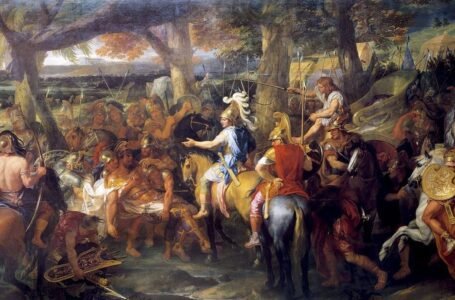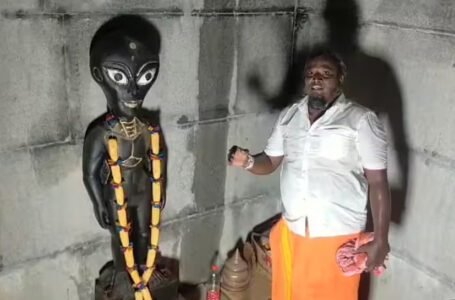Decoding Symbols of Hinduism: Shri Chakra Yantra
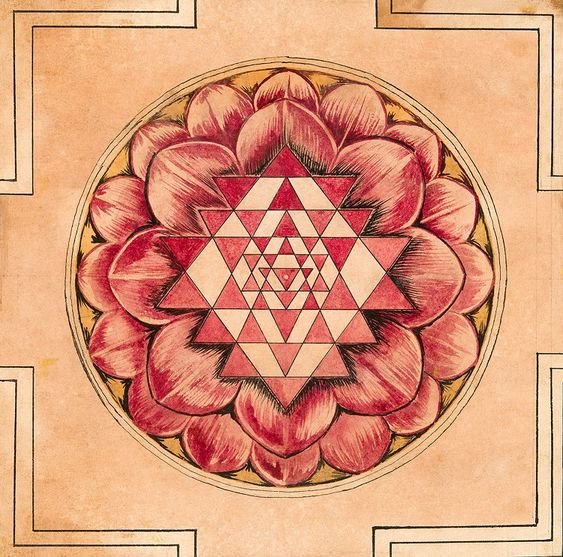
Yantras are a form of geometric diagrams widely used in Tantric tradition and religious practices in India. The Yantras are used during the worship of deities in order to bring in the qualities of meditation to the worship. In Hinduism, the Yantras, especially the Shri Yantra Chakra is one of the most auspicious symbols. Worn as necklaces, rings, and placed in the north or east direction, the Shri Yantra is invoked upon to achieve harmony, balance, fortune and protection from the evil. The origins of the Shri Yantra are dated back to ancient India, where it emerged as a sacred symbol of cosmic energy and divine consciousness. The term Shri Yantra is derived from the Sanskrit words. ‘Sri,’ means wealth or auspiciousness, and ‘Yantra,’ meaning instrument or tool, signifying the Sri Yantra as an instrument for invoking blessings, prosperity, and spiritual elevation.

The Shri Yantra, also known as the Shri or Shree Chakra Yantra is a sacred geometric design that represents the divine feminine energy, in particular that of the goddess Tripura Sundari, otherwise also known as Lalita. Tripura Sundari, is one of the most admired and respected Hindu goddess, especially in Shaktism, a sect in Hinduism that consists of goddesses, where devotees worship different deities who are considered to be the personification of the same supreme goddess Shakti.
The Shri Yantra is network of interlocking matrix of geometric figures, circles, and triangles worshiped in Hinduism, Tantra, and Shri Vidya practices. The Shri Yantra is a powerful symbol because it embodies the cosmic energies and the interconnectedness of the universe. The symbol’s structure or the diagram has nine interlocking triangles which come together and form a central point called the bindu, which represents the ancient cosmic energy. The central point or bindu is a point of infinite potential and divine energy as it represents the union of Shiva and Shakti, the merging of the consciousness and energy, a point from which the whole of cosmos emerges. These triangles that make up the symbol, alternatively point upwards and downwards, symbolizing the masculine and feminine energies. The upward pointing triangles symbolize the goddess’s masculine principle and manifestation representing Shiva, while the downward pointing triangles stand for the female principle and manifestation representing Shakti. Together, they represent the coming together of the opposites, a union and the balance of creation and destruction and form the harmonious cosmic forces.
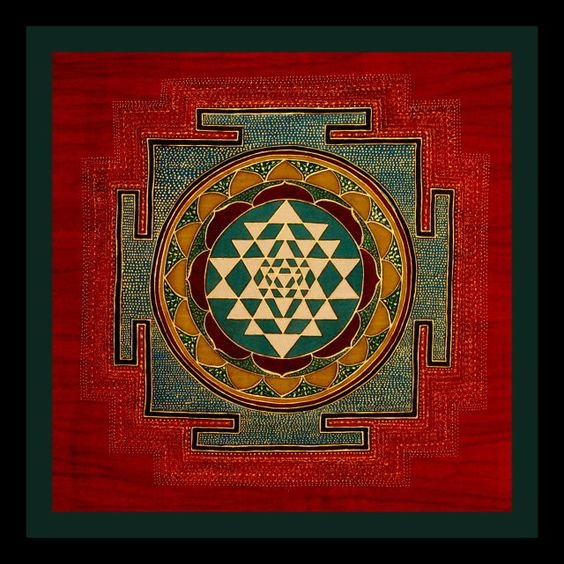
Around the central bindu are concentric circles. These circles represents the cycle of creation and manifestation. The first three concentric circles represent the past, the present and the future, symbolizing the cycle of creation; that is how it began, how it is continuing and how it will continue in the future. These circles also represent the three Gunas of nature, namely, Sattva meaning goodness, purity, calmness and harmony; Rajas meaning activity, passion and movement; and Tamas meaning laziness and inertia. These Gunas govern all aspects of existence, from the subtlest energies to the physical world. In Hinduism it is believed that these Gunas are present in each individual and everything around them; however it is the amount that differs and thus defines an individual’s character and further determines the continuation of life. The other circles symbolize the layers of the cosmos, from the individual self to the cosmic consciousness.
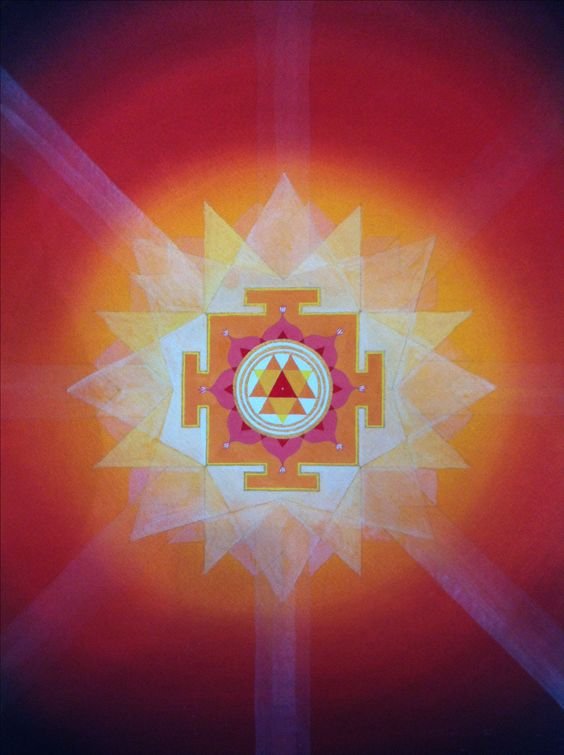
Apart from the circles, the triangles make up the Yantra geometric design. The nine triangles of the Shri Yantra also called Navayoni Chakra, are associated with a specific deity and aspect of the divine feminine. The central triangle, that is the Sarva Siddhi Prada Chakra, is associated with Tripura Sundari, the goddess of beauty and bounty. The other triangles represent various incarnations of goddesses such as Lakshmi goddess of wealth and fortune, Saraswati goddess of knowledge, and Kali goddess of time and destruction. In Hinduism, especially among the devotees of Shaktism, it is believed that meditating on these triangles that form the Shri Yantra invokes blessings and qualities of these divine beings as the ultimate aim of the worshippers is to become one with the divine and the cosmic universe.
The Shri Yantra is not just a static symbol with limited design time or functionality, but it is a dynamic symbol that keeps changing and progressing as a representation of the cosmos that is in constant motion. The geometric structure of the Yantra is believed to be a mirror like image or structure of the universe, including the microcosm of the individual soul to the macrocosm of the cosmos. This symbolism of the triangles is viewed by the believers and the practitioners as a way to seek oneness with the cosmic energies.
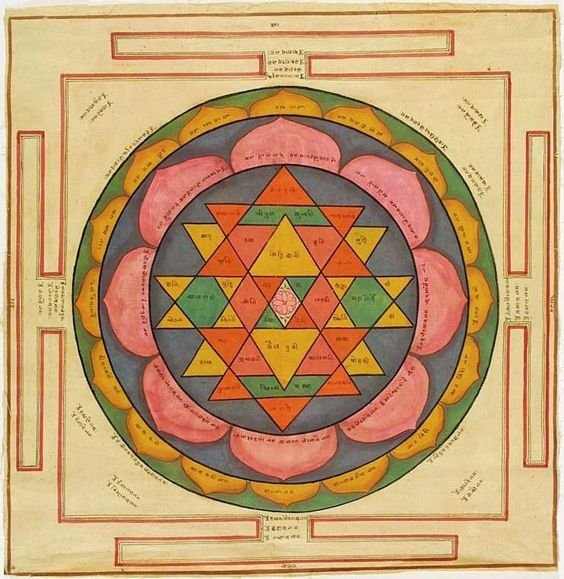
Most importantly, the Shri Chakra Yantra plays a vital role in the practice of Shri Vidya studies. This field of studies is a Hindu Tantric system devoted to the Goddess of Hinduism. In this religious practice the Goddess is worshipped through the mystical geometric diagrams namely the Shri Chakra Yantra. In Shri Vidya the Shri Yantra is considered as a visual representation of the goddess herself, and worshipping the Chakra is seen as an equivalent to the worship of the goddess. This act of worship involves devotees to engage in rituals known as the Yantra Puja, which is the worship of the diagram, to consecrate and energize the Shri Yantra, invoking the presence of the goddess within the Chakra.
The Shri Chakra Yantra is also used in meditation and visualization. Practitioners meditate on the Chakra to achieve the quietness of the mind, to focus on their concentration and to achieve access to higher states of consciousness by blurring the lines between the realms of the real world and the cosmic universe. Meditating on the complex and intricate patterns that make up the Yantra, a person can rise above the limitations of the ego and other evils and experience for themselves the unity of all existence.
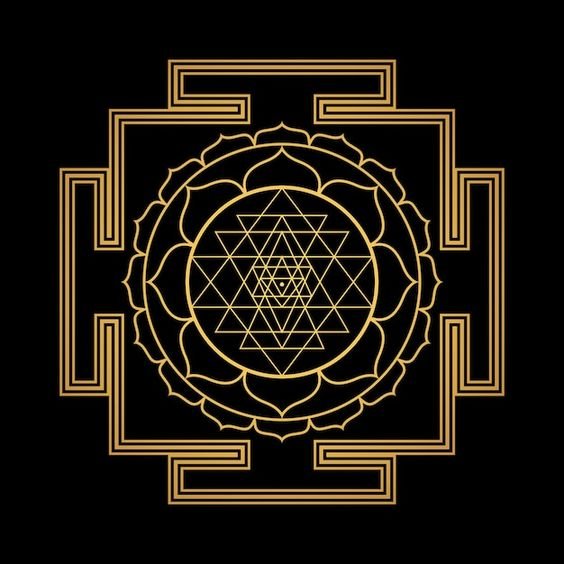
Shri Chakra Yantra along with its spiritual importance is also considered as a powerful talisman for prosperity and abundance. In Hinduism and the Shri Vidya it is believed that the sacred geometric design of the Yantra resonates with the cosmic energies of abundance, in return attracting wealth, success, and prosperity into one’s life. This belief mobilizes the symbol and is therefore seen in the homes and offices and other places of income in order to attract good, auspicious energies, representing itself as a symbol of prosperity and as a protector from the evil. The Shri Yantra is also used as a tool for manifestation of worldly desires as well as of the divine.
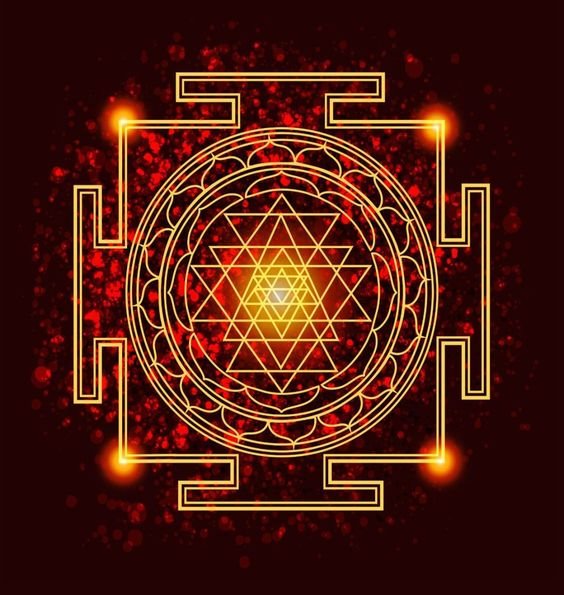
The Shri Chakra Yantra has also become a subject of interest for many modern researchers and scientists. They are fascinated by the designs intricate geometric shapes and mathematical properties. Several research and studies on the symbol imply that the geometric designs and patterns of the Shri Yantra echo with the principles of fractal geometry—the texture of a surface—which is found in nature and the cosmos, from snowflakes to coastlines to galaxies.
The Shri Yantra stands as a timeless symbol of cosmic harmony, spiritual realization and consciousness. The symbol is much more than a simple geometric design, but consists various interpretation and symbolism from the divine feminine, the cosmic order, its interconnectedness, the auspiciousness of the geometric pattern as an attracter of good fortune, prosperity and protector from evil eye, to the Yantra also seen as a significant pattern for meditation to achieve alignment with the cosmic universe and the divine. This timelessness of the symbol continues to inspire modern day individuals alongside the believers and practitioners of the symbol to delve within oneself, and serves as a reminder of infinite potential and the abundance and boundless beauty of the universe.

